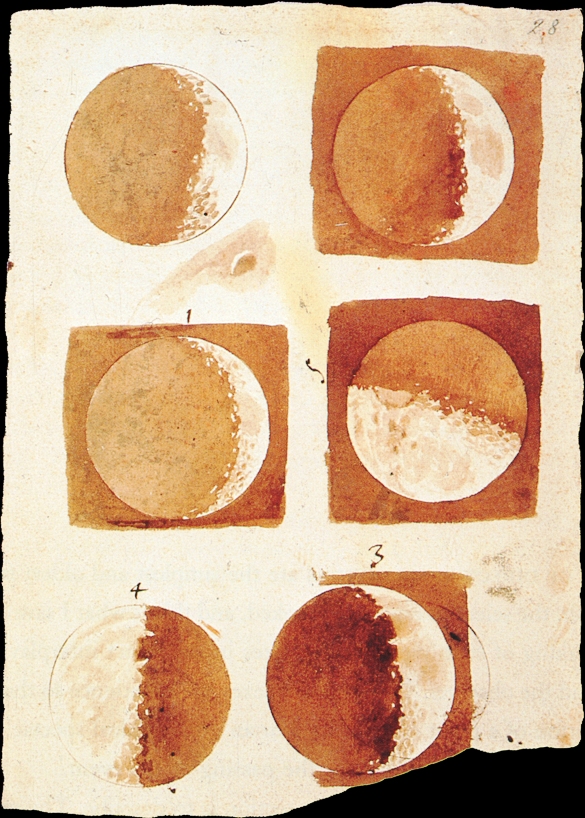 It is possible to observe many features of the moon without a telescope. One of the first things you should try is to track its daily motion against the background stars. Since the moon travels around the earth (360 degrees) in
It is possible to observe many features of the moon without a telescope. One of the first things you should try is to track its daily motion against the background stars. Since the moon travels around the earth (360 degrees) in27.3 days, it will travel through about 13 degrees in 24 hours, or about half a degree (its diameter) every hour.
Galileo was the first person to look at the moon through a telescope; indeed, its mottled gray face was one of the first celestial objects on which he trained his new instrument in 1609.
What he saw conflicted with existing theories that the surface was glassy smooth; it was instead rough and mountainous. He closely studied the terminator, or the boundary separating day and night, and noted the shining tops of mountains. Using simple geometry, he calculated the height of some of the mountains based on the angle of the sun and the estimated length of shadows cast. Galileo overestimated the height of the lunar mountains he observed; but he did conclude rightly that their altitudes were comparable to Earthly peaks.
Noticing mountains and craters on the moon was important, because it helped Galileo conclude that the moon was fundamentally not all that different from the earth. It had mountains, valleys, and it even had what were called seas—in Latin, maria though there is no indication that Galileo or anyone else maintained after telescopic bservations that the maria were water-filled oceans. Conten-ding that the moon resembled the earth in 1609 was not a small thing. This statement implied that there was nothing supernatural or special about the moon or perhaps the planets and the stars, either. Followed to its conclusion, the observation implied that there was perhaps nothing divine or extraordinary about the earth itself. The earth was a body in space, like the moon and the other planets.

No comments:
Post a Comment